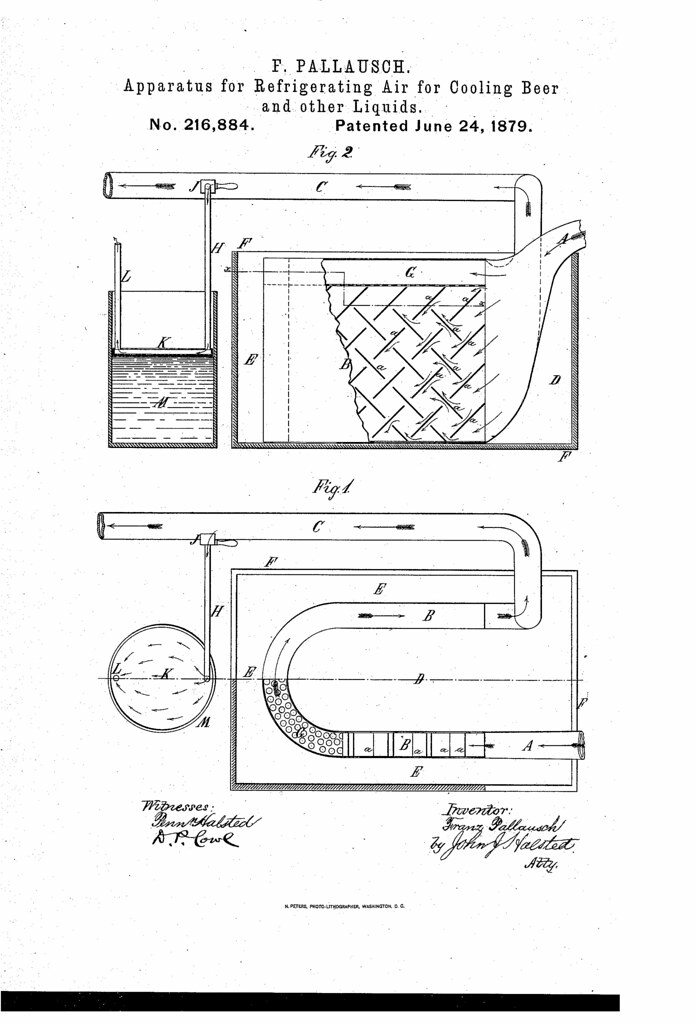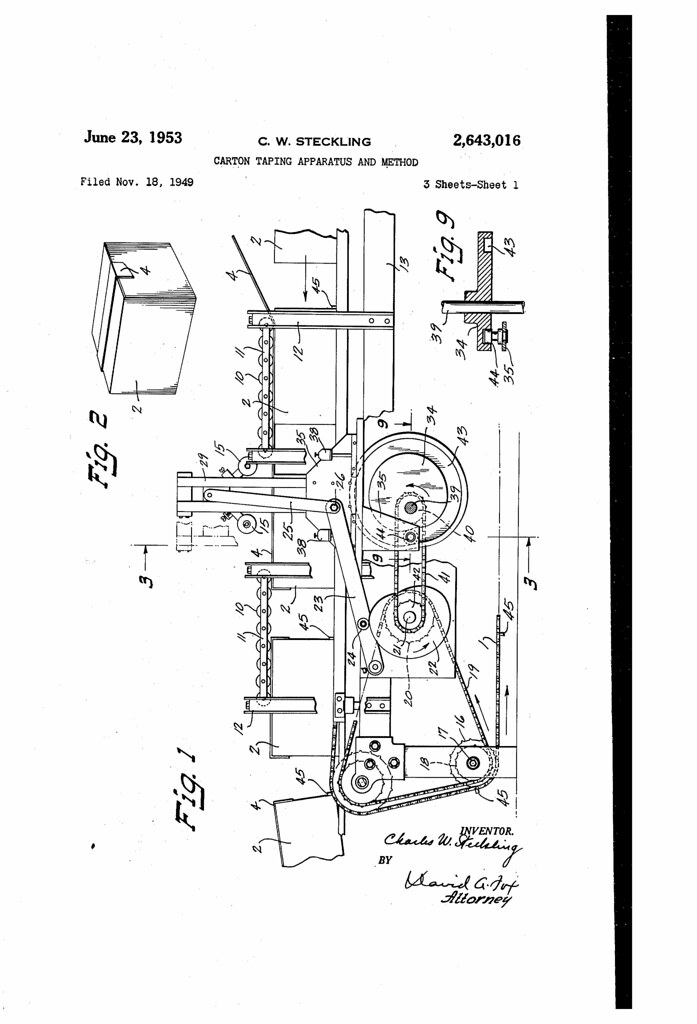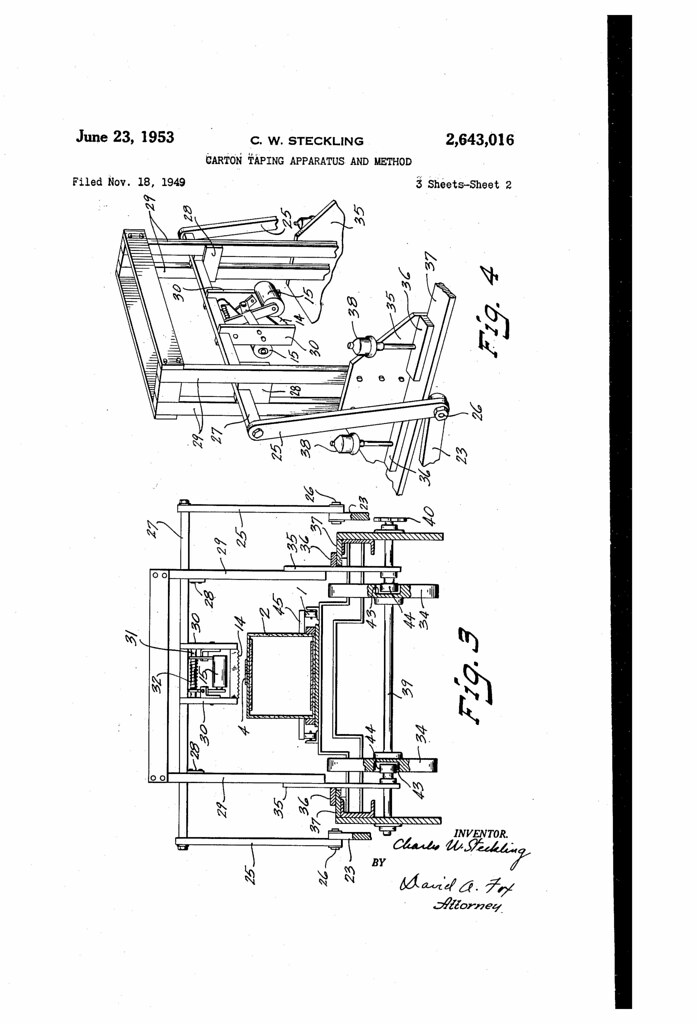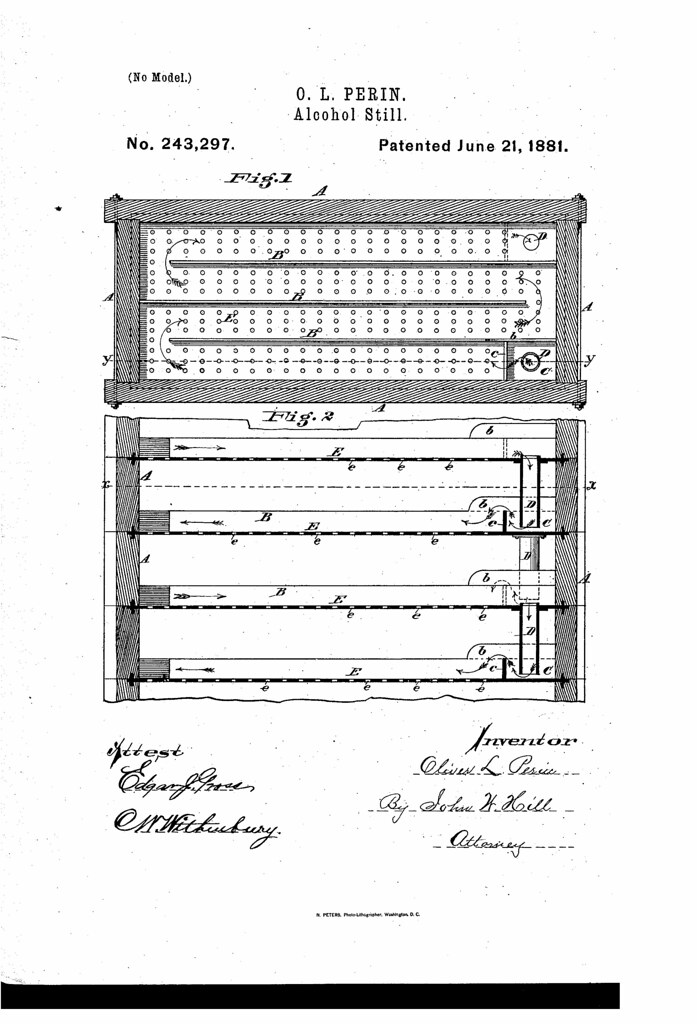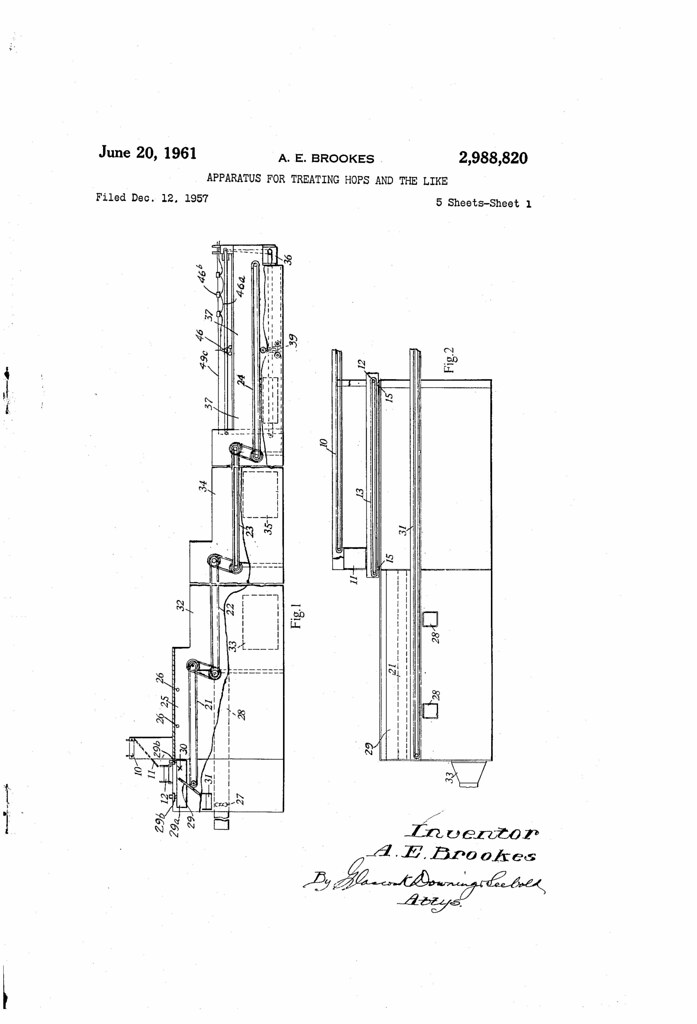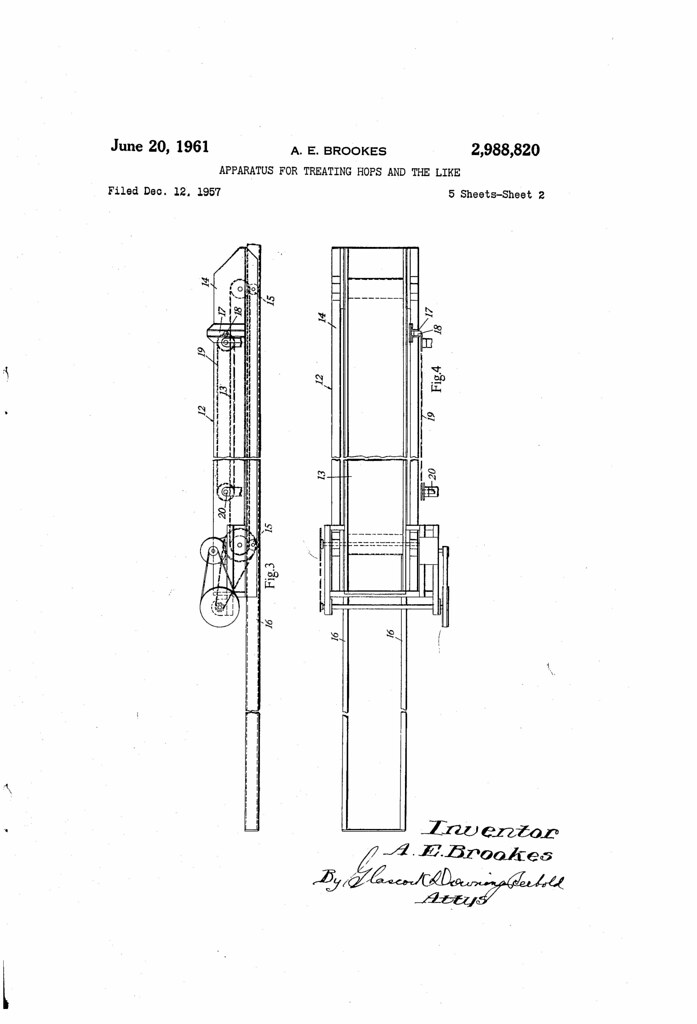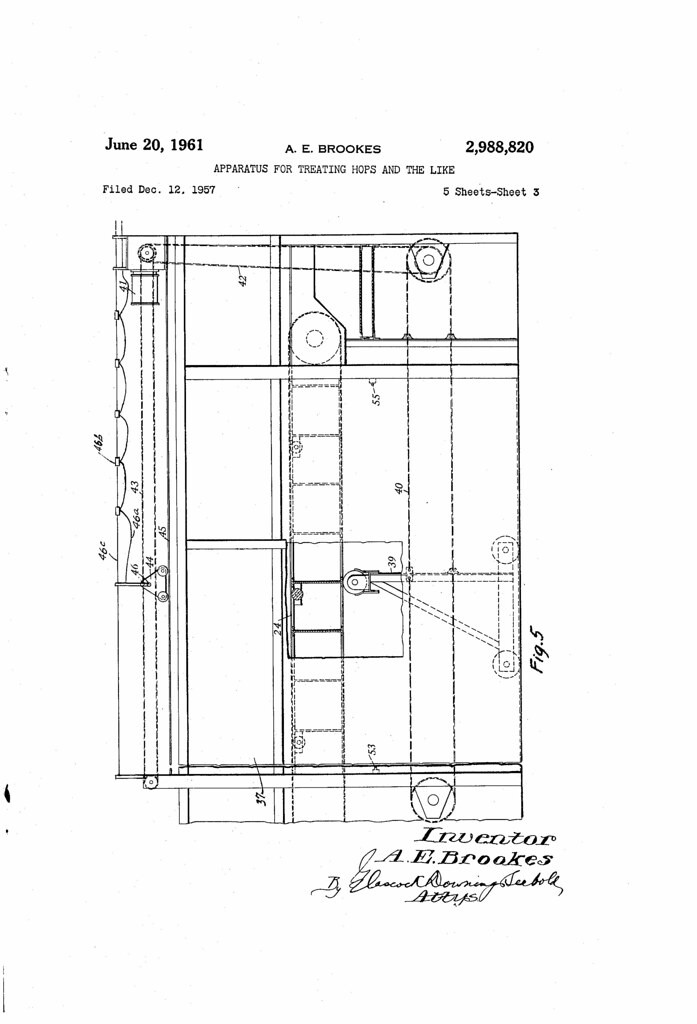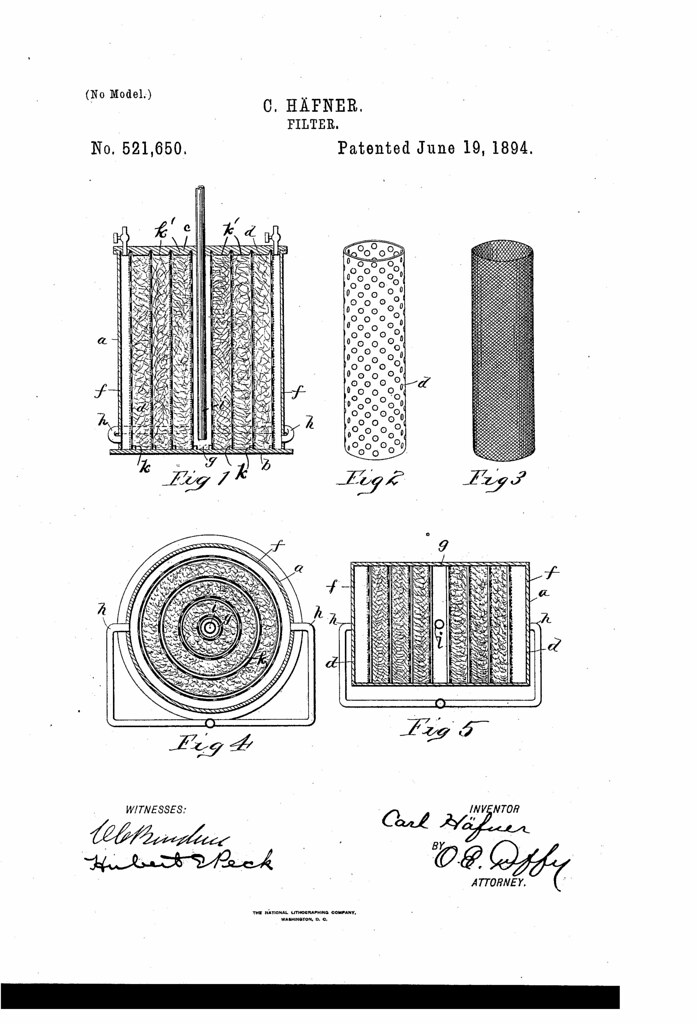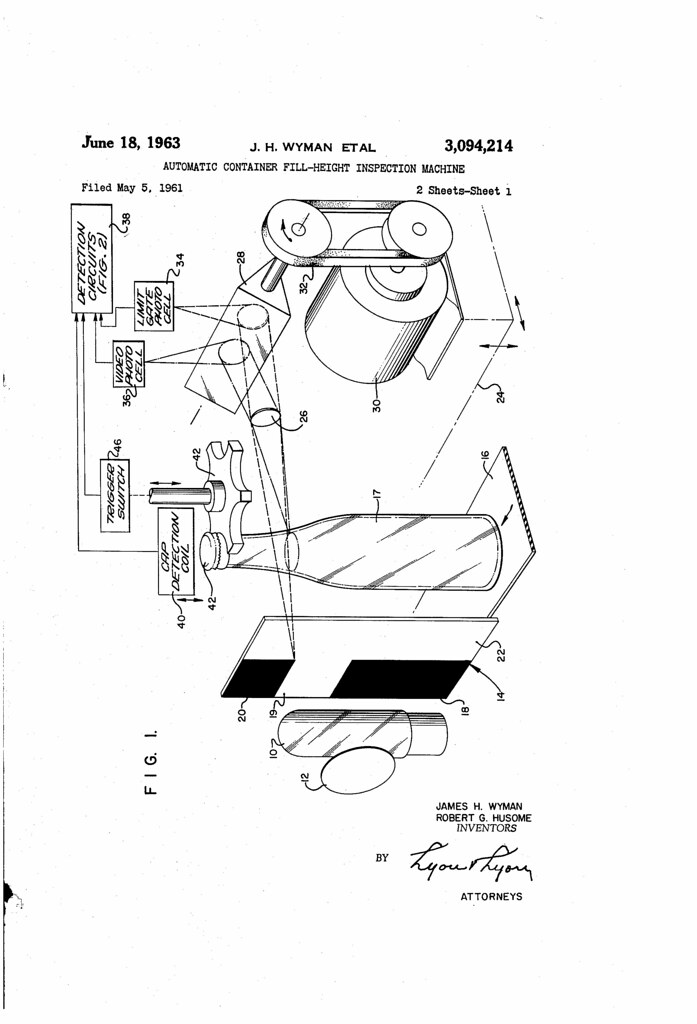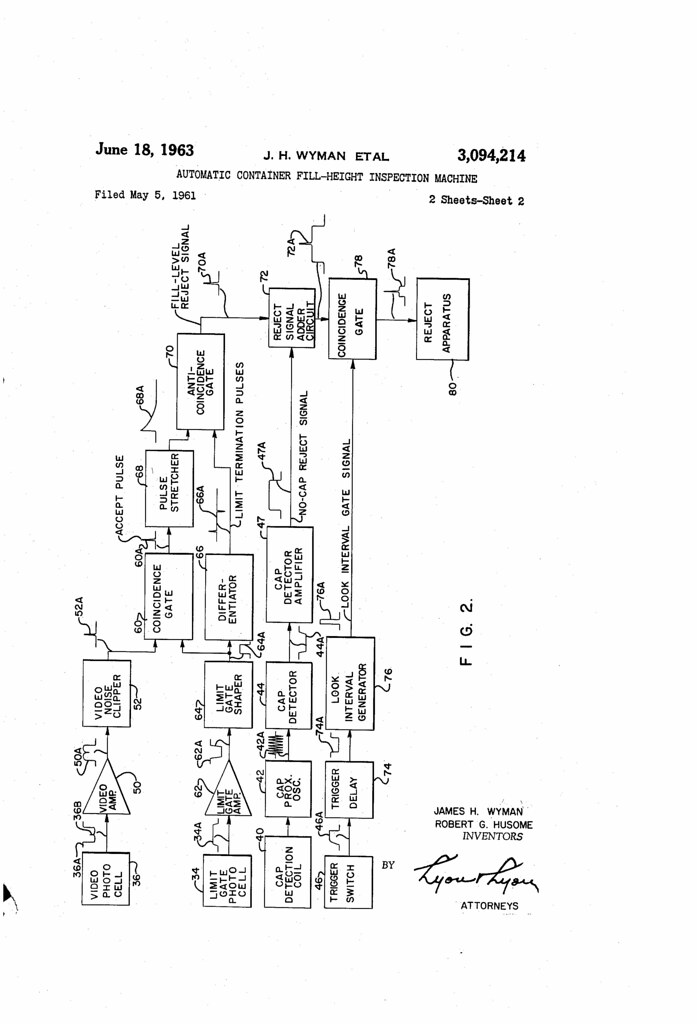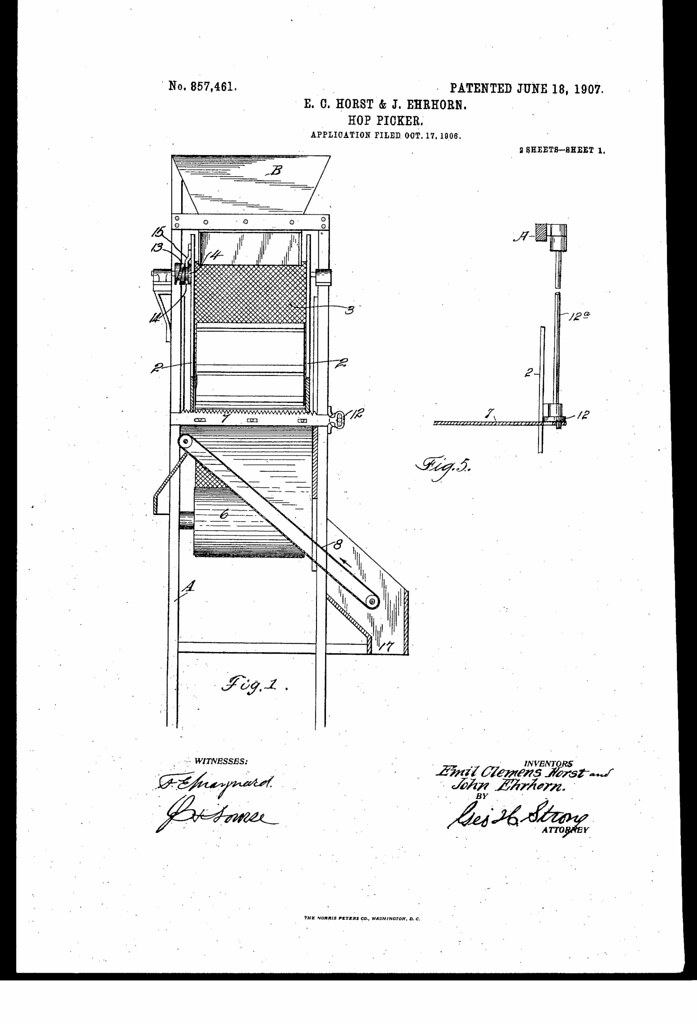
Today in 1860, US Patent 28939 A was issued, an invention of Solomon Godfrey, Loren Barnes, Henry Blish and Solomon S. Smith, for their “Improvement in [Beer] Stills.” There’s no Abstract, although in the description it includes this summary:
The nature of our invention consists, first, in the combination of three or more chambers of a still with bent tubes, radiating perforated tubes, and straight tubes, when arranged in relation to each other, as will be set forth in the following specification.
It consists, second, in the combination of the same with the heater and doubler, as herein after specified.
The object of this arrangement is to divide the beer or high wines into different layers, each to be heated separately by steam passing from the bottom upward through the liquid, thereby effecting a more thorough and rapid distillation than by distributing the liquid in one body.



